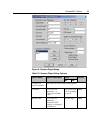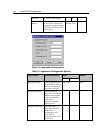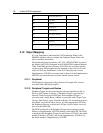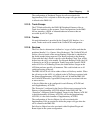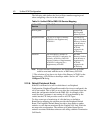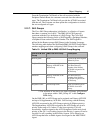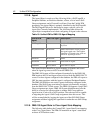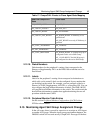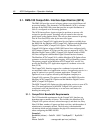
40 Unified ICM Configuration
40
The following table defines the Service Object member mapping used
when configuring a Service in the software.
Table 14: Unified ICM to DMS-100 Service Mapping
Unified ICM
Service
DMS-100 Service
Description
SkillTargetID
none
Unified ICM
SkillTargetID
defined by Cisco
PeripheralNumber
Last four to six digits of Primary
ACD-DN or the Supplementary
ACD-DN**
Last four to six
digits of Dial Plan
Directory Number
of the Primary or
Supplementary
ACD-DN
assigned to the
ACD Group.
Extension
Dial Plan Directory Number of
Primar y A C D -DN if configuring for
a Primary ACD-DN or Dial Plan
Directory Number of Supplementary
ACD-DN if configuring for a
Supplementary ACD-DN
Dial Plan
Directory Number
of the Primary or
Supplementary
ACD-DN
assigned to the
ACD Group.
Note: In some customer configurations, the Supplementary ACD-DN
could be associated with the service of the Primary ACD-DN.
** The selection of last four to six digits of the Primary ACD-DN or the
Supplementary ACD-DN has to be unique within “Service All” in the
Configure ICM dialog.
2.12.6. Default Peripheral Route
If the PG is informed of a call for which there is no Peripheral
Configuration (PeripheralTarget/Route and/or Service not configured), the
call is not tracked. This is likely to occur when the configuration does not
match the configuration defined on the DMS-100. An example of this
would be when a customer is not routing all call types handled by the
switch, but the CTI Link provides events on all Call Types.
To allow some type of monitoring of calls that have no definitive
Route/Service mapping, the software provides the Peripheral Default
Route. The Peripheral Default Route provides a place holder to gather
statistics on calls that are monitored by the CompuCALL Link, which do
not map to the configuration. The software will gather Route/Service
statistics associated with these unknown calls along with their Termination
Call Details.




